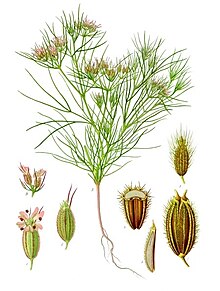Good Fats, Bad Fats: How to Choose
Which oils are healthy?
By Anne Harding
Eating fat can be
heart-healthy if you pick the right kind. Too many of us cut fat willy-nilly
and replace it with refined carbs, so we miss out on the benefits of healthy
fats, says Suzanne Rostler, a registered dietitian and nutritionist in
Framingham, Mass. What’s more, eating lots of refined carbs—like white bread
and white rice—can increase triglyceride levels, which can contribute to heart
and blood vessel disease.
Adults should get 20% to
35% of their calories from fat, according to the 2010 Dietary Guidelines for
Americans. Here’s how to make sure you’re getting enough of the right kind.
Trans fat
Goal: Limit or
eliminate
Trans fats are liquid oils
bombarded with hydrogen so they stay solid at room temperature. They’re found
in many processed and fried foods.
Trans fats increase total
cholesterol and LDL, or bad cholesterol, and lower HDL, the good cholesterol.
Food manufacturers can say
a product is trans fat free if it contains less than half a gram per serving.
These can add up. Check a product’s ingredient list. If you see the words hydrogenated,
partially hydrogenated, or shortening, it contains trans fat; you’re better off
leaving it on the shelf.
Saturated fat
Goal: Limit
Saturated fat increases
total cholesterol and LDL, and may boost your type 2 diabetes risk. Meat,
seafood, and dairy products are sources of saturated fat. Some plant foods,
like palm and coconut oil, also contain it. Animal or vegetable, saturated fat
carries the same risks.
Choose low-fat or fat-free
dairy products to get their key nutrients while cutting saturated fat.
The Dietary Guidelines
recommend no more than 10% of total calories come from saturated fat. So if you
eat 2,000 calories a day, for example, keep your saturated fat intake below 22
grams.
Unsaturated fat
Goal: Get more!
Unsaturated fats are mostly
good guys—although trans fat is technically an unsaturated fat. However,
healthy unsaturated fats are liquid at room temperature, while trans and
saturated fats are solid.
To increase your
unsaturated fat, replace solids, like butter, with olive and vegetable oils,
and swap red meat for seafood or unsalted nuts. (Seafood and nuts also contain
saturated fat, but usually less than red meat.)
The two main types of
unsaturated fats are monounsaturated and polyunsaturated fats; their chemical
structure is slightly different, as are their health benefits.
Cholesterol
Goal: Limit
Scientific understanding
of the dangers of dietary cholesterol has shifted. "It used to be thought
that eating dietary cholesterol, like in shrimp or eggs, would raise
cholesterol," Rostler explains. "It does to some extent, but it’s
more important to focus on not eating saturated and trans fats."
For people with normal
cholesterol levels, Rostler says, the current recommendation is no more than
300 milligrams of cholesterol daily, while people at high risk of heart disease
should consume less than 200 milligrams daily. For perspective, one egg
contains about 200 milligrams of cholesterol.
Polyunsaturated fats
Goal: Get more!
You can find
polyunsaturated fats in nuts, seeds, vegetable oils such as corn and safflower
oil, and fatty fish. This category encompasses omega-3 and omega-6 fatty acids,
which are known as essential fatty acids because our bodies don’t make them—we
have to get them from food.
Polyunsaturated fats can
help lower your total cholesterol level, says Sari Greaves, a registered
dietitian and nutrition director at Step Ahead Weight Loss Center, in
Bedminster, N.J.
Monounsaturated fats
Goal: Get more!
Monounsaturated fats raise
HDL (good cholesterol) and lower LDL. Canola oil, olive oil, peanut oil, nuts,
seeds, and avocados are good sources.
Trade sour cream dip for
hummus (which is rich in olive oil) or guacamole; use veggies or whole-wheat
chips to dip. Try peanut oil in a stir-fry to jazz up your diet while helping
your heart, says Greaves, who is also an American Dietetic Association
spokesperson and coauthor of The Cardiac Recovery Cookbook.
Unsalted nuts contain
monounsaturated fat, but they’re high in calories. Sprinkle them on salads or
yogurt, rather than eating a 170-calorie handful.
Omega-3 fatty acids
Goal: Get more!
In the world of good fats,
omega-3s are superstars. They fight inflammation, help control blood clotting,
and lower blood pressure and triglycerides.
Fatty fish like albacore
tuna, salmon, mackerel, and sardines are good sources, Greaves says. You don’t
have to break the bank to get them; canned Alaskan salmon and canned sardines
are okay too.
Vegetable sources include
soy, walnuts, and some vegetable oils. There are no specifics on how much you
should consume, but the American Heart Association suggests eating at least two
3.5-ounce servings of fish each week.
Omega-6 fatty acids
Goal: Jury still
out
Most of us have no trouble
getting enough omega-6s, which are found in vegetable oils and many snack
foods.
The ratio of omega-6s to
omega-3s in the typical Western diet is around 10 to 1. Some research suggests
that between a 2-to-1 and a 4-to-1 ratio reduces the risk of death from heart
disease.
There has been some
controversy over whether omega-6s can actually be harmful to the heart, but
Greaves and Rostler agree that as long as you’re eating them instead of
saturated or trans fats, and you make a point of upping your omega-3 intake,
you’ll be helping your ticker.
Source:







